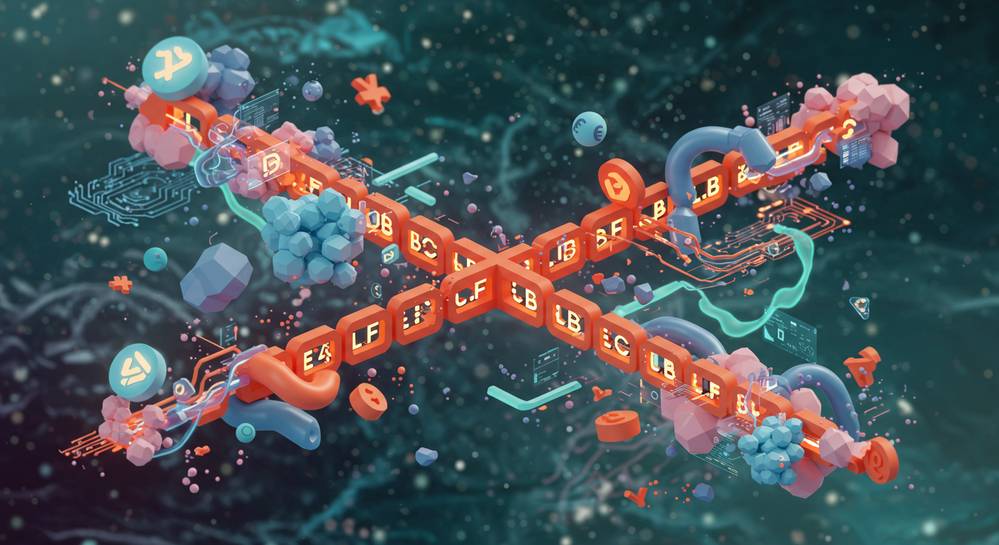In the rapidly evolving world of cryptocurrencies and decentralized ledgers, understanding the fundamental concepts is crucial. One such pivotal concept is what is a blockchain fork. This phenomenon, often leading to significant shifts within a blockchain network, can be a source of confusion but is essential for comprehending how these systems evolve and adapt. Let’s dive deep into what a blockchain fork entails, why they happen, and their impact on the broader crypto ecosystem.
Understanding the Basics of a Blockchain Fork

Understanding What is a Blockchain Fork
A blockchain fork represents a fundamental divergence in a blockchain’s history, leading to two separate chains. This split occurs when network participants disagree on protocol rules or implement different software versions. Essentially, it creates two distinct versions of the ledger from a specific block forward, each with its own future and set of transactions.
This mechanism is inherent to decentralized systems, where no single authority dictates changes. Instead, consensus among nodes governs the network’s evolution. When a significant portion of the network adopts new rules, while others adhere to the old ones, a fork becomes inevitable, shaping the network’s future trajectory and potentially creating new digital assets.
Such divergences are not always contentious. They can be planned upgrades to improve network functionality, security, or scalability. For instance, many networks schedule forks to introduce new features or address vulnerabilities, reflecting a continuous process of improvement and adaptation in the crypto landscape.
Understanding what is a blockchain fork is crucial for anyone engaging with decentralized finance. It highlights the dynamic nature of these networks and the critical role of blockchain consensus algorithms in maintaining a unified ledger or creating new, independent chains.
Hard Forks Versus Soft Forks: Key Differences
Distinguishing Hard and Soft Forks
Blockchain forks represent critical moments in a network’s evolution, primarily categorized into hard forks and soft forks. Understanding these distinctions is vital for grasping how decentralized protocols adapt and upgrade. Each type carries unique implications for network participants and the overall ecosystem.
- Hard Forks: A hard fork creates a permanent, incompatible split from the original blockchain. Nodes must upgrade their software to follow the new rules; otherwise, they operate on a separate chain. This type of fork often results from significant disagreements or fundamental protocol changes, leading to two distinct cryptocurrencies. A prime example is the split of Ethereum into Ethereum and Ethereum Classic.
- Soft Forks: In contrast, a soft fork is a backward-compatible upgrade. Older nodes can still validate blocks from the new chain, even if they do not fully understand the new rules. However, to enforce the new rules and benefit from the upgrade, nodes must update their software. Soft forks are generally less disruptive and aim for incremental improvements, like Bitcoin’s Segregated Witness (SegWit).
The core difference lies in compatibility: hard forks demand universal upgrades for continued participation on the new chain, while soft forks allow older versions to coexist, albeit with limitations. This dynamic interplay showcases the flexibility and challenges in managing new blockchain technologies and their community consensus.
Implications and Notable Examples of Blockchain Forks

Impact and Key Examples of Blockchain Forks
A blockchain fork carries significant implications, profoundly shaping network security, decentralization, and even giving rise to new cryptocurrencies. When a hard fork occurs, it often creates a separate digital asset, leading to community divisions and a redistribution of resources. This dynamic presents both opportunities for innovation and the inherent risk of fracturing a network’s collective strength.
Historical Blockchain Fork Cases
Throughout blockchain history, several notable forks have redefined the crypto landscape:
- Bitcoin Cash (BCH): Emerging from Bitcoin in August 2017, this hard fork stemmed from a disagreement over block size limits. Bitcoin Cash proponents sought larger blocks for increased transaction throughput, creating a distinct chain and asset.
- Ethereum Classic (ETC): Following the 2016 DAO hack, the Ethereum community hard-forked to reverse the malicious transactions, forming the new Ethereum chain. A minority, adhering to the “code is law” principle, continued the original chain, now known as Ethereum Classic.
- Litecoin (LTC): While not a contentious split, Litecoin originated as a fork of Bitcoin’s codebase. It aimed to be a faster, “silver” alternative to Bitcoin’s “gold,” featuring quicker block generation and a different hashing algorithm.
These examples underscore that a blockchain fork can be either a contentious event or a planned upgrade. They serve various purposes, from resolving deep-seated disagreements to introducing new functionalities or even launching entirely new projects, influencing the broader field of undefined.
The Broader Impact of Forks on the Blockchain Ecosystem

Broader Impact of Blockchain Forks on the Ecosystem
Beyond technical changes and new assets, a blockchain fork profoundly impacts the broader cryptocurrency ecosystem. They underscore the constant challenge of achieving consensus within decentralized systems, balancing stability with innovation. Forks serve as powerful tools for crucial upgrades, addressing security flaws, or rectifying past errors, as exemplified by the Ethereum Classic situation.
However, forks also introduce significant complexities. Community divisions can diminish the network effect for both resulting chains, potentially fragmenting developer resources. Users often face confusion regarding their asset holdings, especially across original and new chains. Exchanges and wallet providers must adapt swiftly, adding layers of operational complexity to support these new network versions.
Ultimately, forks highlight the dynamic nature of blockchain technology. They are a testament to its decentralized governance model, where network participants collectively steer the protocol’s direction. While sometimes perceived as crises, forks are essential mechanisms for adaptation, growth, and the continuous pursuit of more robust and efficient decentralized networks.
In conclusion, a blockchain fork is a fundamental event in the lifecycle of any decentralized network. Whether a backward-compatible soft fork or a divisive hard fork, these divergences are critical mechanisms for implementing upgrades, resolving disputes, and driving innovation within the crypto space. They underscore the power of decentralized governance and the constant evolution inherent in these systems. For anyone engaging with blockchain technology, understanding the mechanics and implications of forks is not just academic; it’s essential for making informed decisions and appreciating the resilience and adaptability of these groundbreaking networks. Continue your blockchain journey and explore more at Dynamic Crypto Network.
